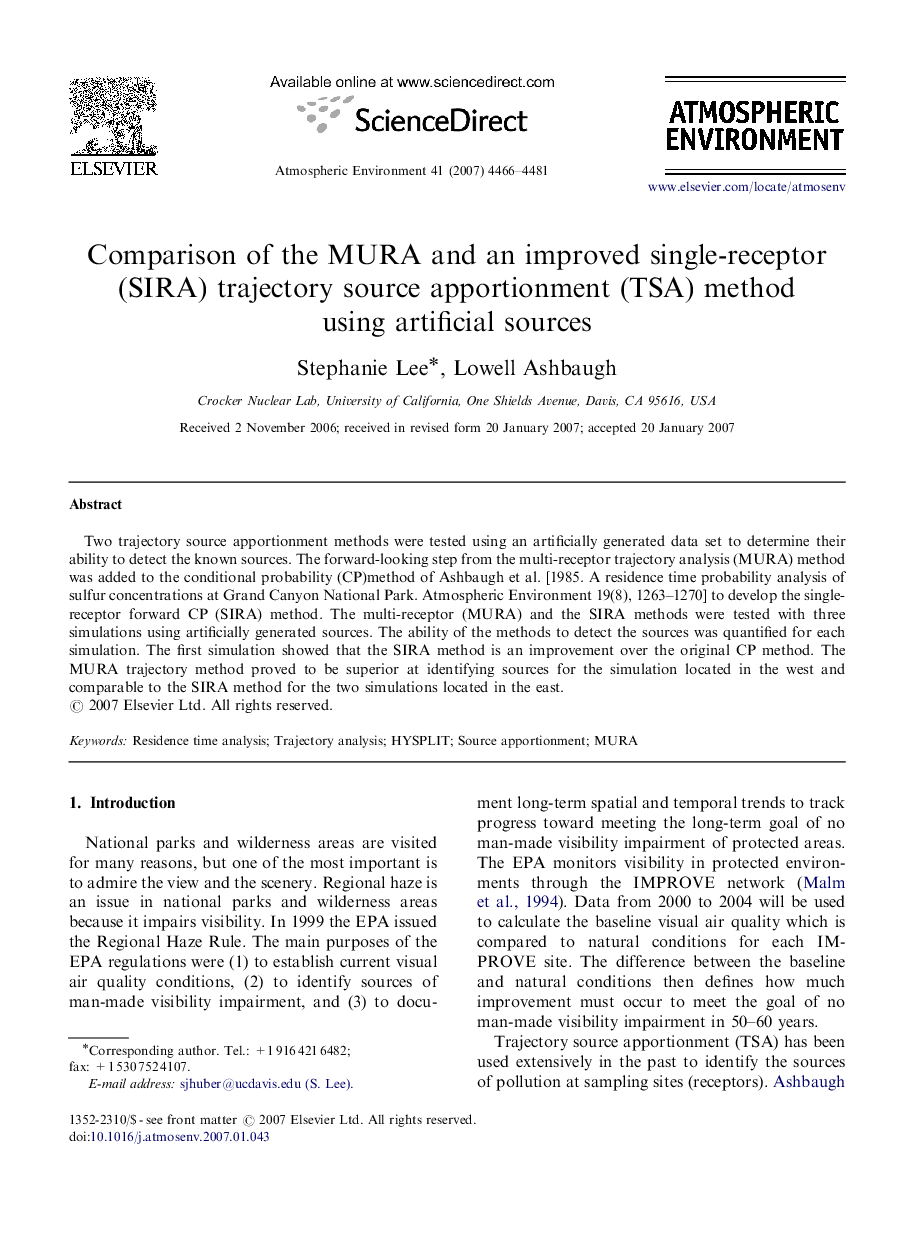| Article ID | Journal | Published Year | Pages | File Type |
|---|---|---|---|---|
| 4443280 | Atmospheric Environment | 2007 | 16 Pages |
Two trajectory source apportionment methods were tested using an artificially generated data set to determine their ability to detect the known sources. The forward-looking step from the multi-receptor trajectory analysis (MURA) method was added to the conditional probability (CP)method of Ashbaugh et al. [1985. A residence time probability analysis of sulfur concentrations at Grand Canyon National Park. Atmospheric Environment 19(8), 1263–1270] to develop the single-receptor forward CP (SIRA) method. The multi-receptor (MURA) and the SIRA methods were tested with three simulations using artificially generated sources. The ability of the methods to detect the sources was quantified for each simulation. The first simulation showed that the SIRA method is an improvement over the original CP method. The MURA trajectory method proved to be superior at identifying sources for the simulation located in the west and comparable to the SIRA method for the two simulations located in the east.
